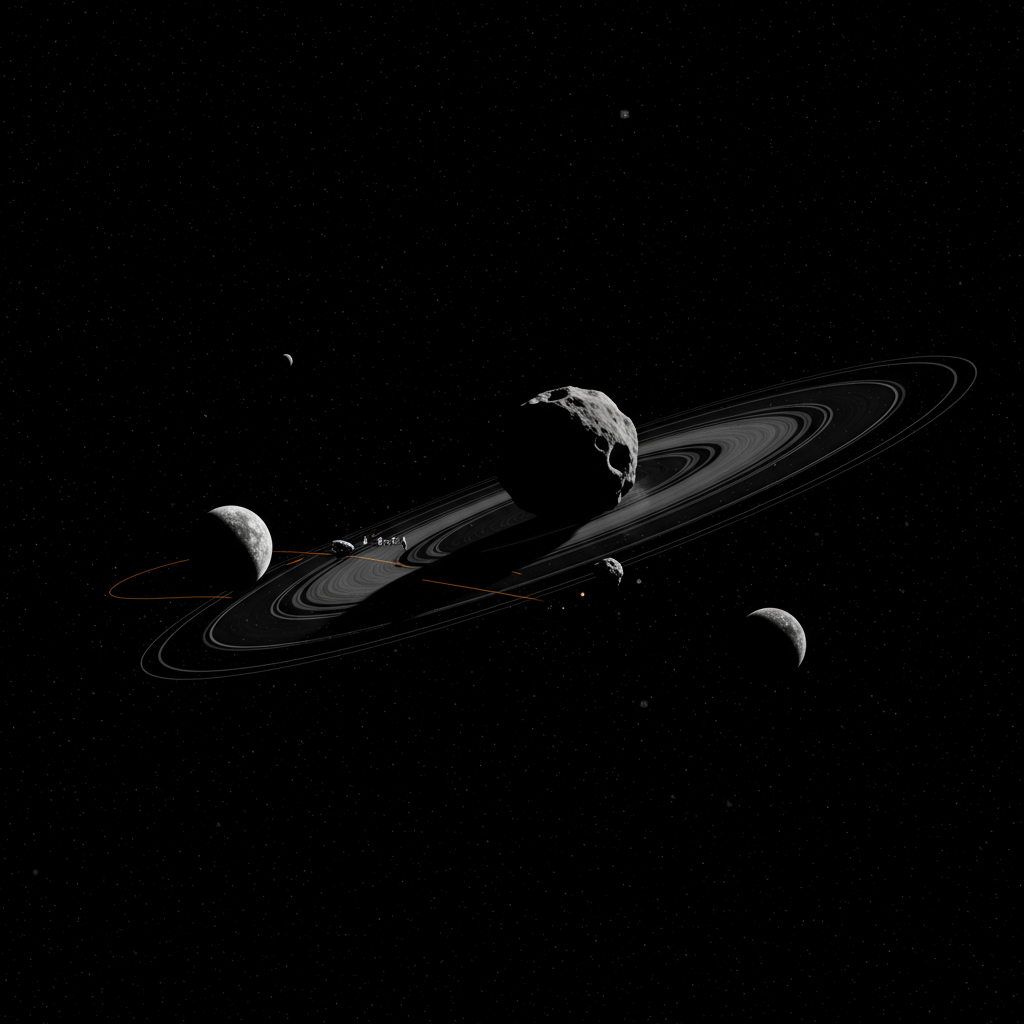The European Space Agency’s ambitious quest to land a flagship rover on Mars faces renewed uncertainty. Proposed budget reductions for NASA, advanced by the Trump administration, now threaten vital US support for the long-troubled ExoMars mission, potentially pushing its launch well past the current 2028 target. This development leaves Europe scrambling to secure critical technologies and funding, jeopardizing years of scientific effort aimed at answering one of humanity’s most profound questions: did life ever exist on the Red Planet?
A Mission Plagued by Setbacks
The journey of Europe’s first Mars rover, named rosalind Franklin after the pioneering British chemist, has been anything but smooth. Conceived in the early 2000s, the ExoMars program initially envisioned a partnership with NASA for a 2011 launch. However, in 2012, the US agency withdrew due to funding cuts under the Obama administration. Russia’s space agency, Roscosmos, then stepped in, committing to provide key elements like a launch vehicle and a landing platform.
Despite numerous delays and cost overruns, the mission was finally slated for launch in September 2022. This progress was abruptly halted by Russia’s invasion of Ukraine, forcing ESA to terminate the cooperation and leaving the project stranded. Hope resurfaced in 2024 when NASA re-engaged, offering crucial technical assistance to get the mission back on track for a potential 2028 launch window. Now, that lifeline appears threatened by the latest US budget proposal.
Why NASA Support is Critical
NASA’s proposed contribution is far from minor. The US agency was expected to supply essential technologies that ESA currently lacks fully developed European alternatives for. These include:
A Launcher: Providing the rocket needed to send the heavy mission components towards Mars.
Descent Propulsion System: Critical “throttleable” retrorockets necessary to slow the lander during its perilous descent through the Martian atmosphere for a soft landing.
- Radioisotope Heater Units (RHUs): Small nuclear batteries vital for keeping the Rosalind Franklin rover’s sensitive instruments and electronics warm enough to survive the incredibly frigid Martian nights, where temperatures can plummet below -100° Celsius (-148° Fahrenheit).
- www.space.com
- www.space.com
- english.elpais.com
- www.scmp.com
- opentools.ai
Sources familiar with the mission’s technical needs indicate that while the underlying technical capabilities to develop replacements exist within Europe, doing so from scratch would be a significant undertaking. It requires substantial financial investment and development time, resources that might not be available quickly enough to meet the ambitious 2028 deadline.
The Specter of Further Delays
Losing NASA’s support means Europe would likely face developing these technologies independently. This scenario points towards potential delays stretching beyond the 2028 launch window. Experts suggest a delay past 2030 is probable if ESA has to go it alone. Missing the optimal launch period every 26 months isn’t just a matter of waiting; it can introduce complex technical challenges.
A delay means the alignment between Earth and Mars changes. This could alter the required trajectory and, critically, the entry, descent, and landing (EDL) parameters for the selected landing site. The systems currently designed and tested for a 2028 arrival might need significant modifications, adding more time, cost, and risk.
The Unique Scientific Promise
Despite its long and difficult path, the Rosalind Franklin rover still holds immense scientific value. Its primary instrument is a sophisticated 6-foot (2-meter) drill. This capability sets it apart from previous Mars rovers, including NASA’s highly successful Perseverance, which drills only a few inches deep. The ability to access soil layers much deeper below the surface is crucial for the mission’s scientific objective.
Mars has a very thin atmosphere, offering little protection from the sun’s intense radiation. This radiation likely would have destroyed any potential signs of life near the surface over billions of years. However, if microbial life ever existed on ancient Mars when conditions were wetter and warmer, traces, or even dormant organisms, might have survived deep underground, shielded from the harsh radiation. The Rosalind Franklin rover is uniquely equipped to search for these potential biosignatures in previously inaccessible depths. As one expert noted, it “can still make the most important discovery ever” by potentially answering whether we are alone in the solar system.
Financial and Technical Hurdles Ahead
Should NASA be forced to withdraw, ESA and its member states would need to find hundreds of millions of dollars to fund the development of the missing critical technologies and cover the additional costs associated with further delays and maintaining the aging rover.
Significant funds have already been committed to the stranded mission. In November 2022, ESA member states allocated 360 million euros (approximately $417 million at the time). Earlier in 2024, an additional 150 million euros were dedicated to Airbus to build a new landing platform. However, developing a Mars-capable launcher and the specific EDL components requires fresh investment and dedicated programs.
While Europe possesses powerful rockets like the upcoming Ariane 6, its current configurations are not definitively capable of sending the complex ExoMars mission components to the Red Planet without modifications. Sources indicate that ESA has begun initial studies into developing throttleable retrorockets and RHUs, but these efforts are reportedly not on a timeline to produce flight-ready hardware by 2028.
The Political Battle in Washington
The fate of NASA’s budget, and consequently its ability to support ExoMars, ultimately rests with the US Congress. The proposed cuts are part of a broader plan that targets significant reductions across NASA’s science division. Reports suggest these proposals could potentially halve the science budget, impacting not just planetary science but also astrophysics and Earth science programs. While human spaceflight programs like Artemis, aimed at returning astronauts to the Moon and eventually Mars, appear largely protected, science missions face substantial threats.
This situation has sparked alarm within the scientific community and among policymakers who see these cuts as potentially ceding US leadership in critical areas of space exploration to competing nations like China, particularly in the context of ambitions like Mars Sample Return missions. Many European scientists involved with ExoMars are holding onto hope that Congress will ultimately reject the administration’s proposal and restore funding levels that allow for NASA’s continued partnership. They emphasize that NASA’s planned investment in ExoMars is “very small compared to the scientific return” promised.
The proposed budget cuts also risk impacting other planned collaborations between NASA and ESA, including early-stage development projects like the LISA gravitational wave detector, the EnVision Venus orbiter, and the NewAthena X-ray space telescope. The uncertainty surrounding ExoMars is symptomatic of a wider concern about the future of international space science partnerships under the proposed budget.
A Legacy of Landing Challenges
Adding to the anxieties, Europe has a challenging history with attempting soft landings on Mars. The experimental Schiaparelli lander, designed to test the EDL system for the Rosalind Franklin mission, crashed in 2016 due to a software glitch involving motion sensor data. Earlier, the UK’s Beagle 2 lander was lost upon landing in 2003, later found in satellite images; its failure was attributed to solar panels not deploying correctly, blocking its communication antenna. While lessons have been learned from these experiences, the complexity of a Mars landing remains a formidable technical hurdle.
As the political debate continues in the US Congress, the Rosalind Franklin rover sits in storage at a facility in Italy, undergoing periodic checks. Its engineering model is occasionally tested in a simulated Mars yard. ESA member states are expected to discuss the mission’s future at a meeting later this year in Germany. The long and arduous journey of the Rosalind Franklin rover continues, its fate now intertwined with budget negotiations thousands of miles away.
Frequently Asked Questions
What critical NASA components are needed for the ExoMars mission?
NASA was slated to provide three critical components for the European Space Agency’s ExoMars Rosalind Franklin rover mission. These include the launch vehicle (rocket) needed to send the spacecraft towards Mars, a specialized propulsion system with “throttleable” retrorockets necessary to slow down the landing module during its descent, and radioisotope heater units (RHUs) required to keep the rover warm during the extremely cold Martian nights. Europe currently lacks readily available flight-ready alternatives for these specific technologies.
Why could missing the 2028 launch window cause further problems for ExoMars?
Mars launch windows occur approximately every 26 months, representing optimal alignment between Earth and Mars for sending spacecraft. Missing the 2028 window means waiting until around 2030 or 2031. Such a delay isn’t just about time; the new orbital trajectory might require changes to the mission’s approach, entry, descent, and landing (EDL) requirements for the chosen landing site. Modifications to the already developed and tested hardware could be necessary, adding significant technical challenges, cost, and potential for even further delays.
How unique is the Rosalind Franklin rover’s scientific goal compared to other Mars missions?
The Rosalind Franklin rover possesses a unique scientific capability: a drill that can bore up to 6 feet (2 meters) below the Martian surface. This is significantly deeper than drills on other current Mars rovers like NASA’s Perseverance, which collects samples from only a few inches down. This deep-drilling ability is crucial because the Martian surface is exposed to high levels of solar radiation, which would likely destroy organic molecules. Scientists believe that any potential traces of past life would be best preserved deep underground, protected from radiation, making Rosalind Franklin’s search for biosignatures below the surface a unique and potentially groundbreaking endeavor.
Conclusion
The European Space Agency’s Rosalind Franklin Mars rover, a mission with a truly unique scientific objective, faces yet another daunting challenge. Years of development, shifting international partnerships, and significant investment hang in the balance as proposed NASA budget cuts threaten the crucial US technical support needed to get the mission to the Red Planet by 2028. If ESA must develop these technologies independently, experts foresee significant delays, further increasing costs and technical hurdles. While the mission’s fate ultimately depends on the decisions made by the US Congress regarding NASA’s budget, the uncertainty casts a long shadow over Europe’s flagship Mars exploration effort and highlights the precarious nature of international collaboration in space science. The scientific community holds its breath, hoping that the promise of unlocking Mars’ deepest secrets will outweigh the political and budgetary pressures currently imperiling this ambitious mission.
Word Count Check: 1180



